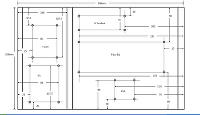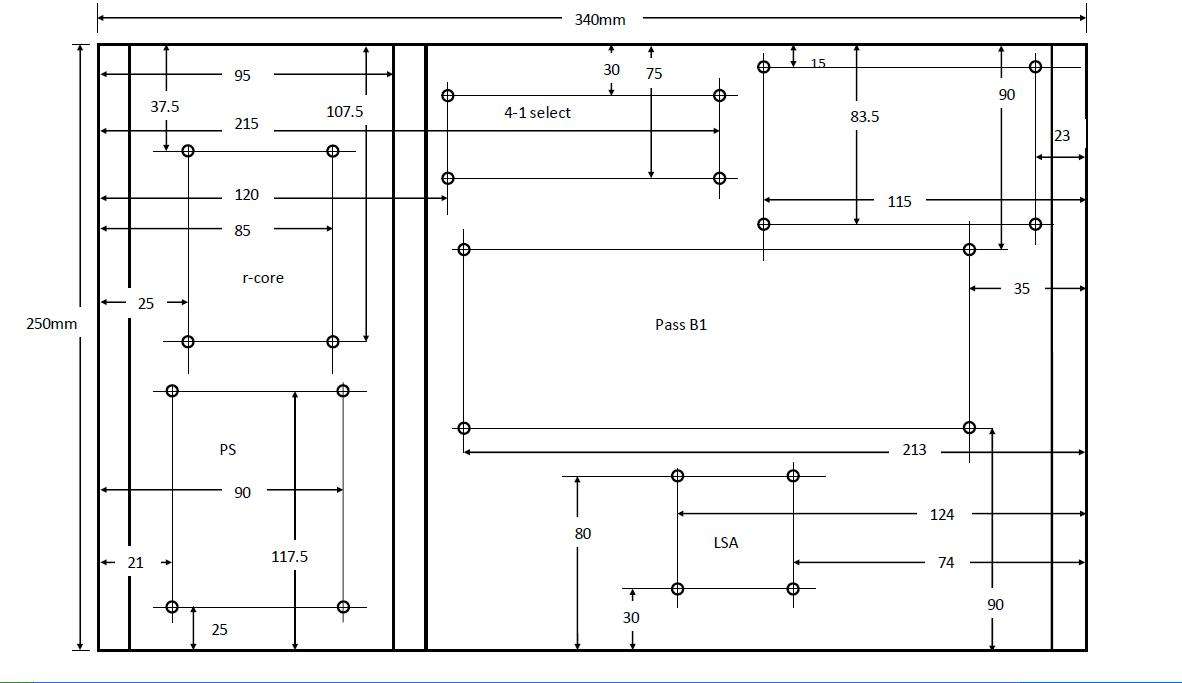initial observations
isint a 5mm LED hole too large - normally clients ask for 3mm - all you got to do is stick the LED behind the hole
3mm is enough for the light to shine thru
what one of my ingenious clients does is rest the faceplate on polythene
and then inject the hole with feviquick
this forms a transparent cover on the hole on solidifying
he then sticks the led behind the faceplate
Also the backplate option 2
you can shift the IN-1 holes BELOW the In-2 holes
in this way the out looks diff from the IN
plus the IN moves away from the PSU
Please note : i know nothing about electronic ckts - so the above may be dum advice
P.S - Om sir - hats off to you
those diagrams take a crap load of work!
i need to convert them to scale now - will have to say good morning to my dtp fellow
isint a 5mm LED hole too large - normally clients ask for 3mm - all you got to do is stick the LED behind the hole
3mm is enough for the light to shine thru
what one of my ingenious clients does is rest the faceplate on polythene
and then inject the hole with feviquick
this forms a transparent cover on the hole on solidifying
he then sticks the led behind the faceplate
Also the backplate option 2
you can shift the IN-1 holes BELOW the In-2 holes
in this way the out looks diff from the IN
plus the IN moves away from the PSU
Please note : i know nothing about electronic ckts - so the above may be dum advice
P.S - Om sir - hats off to you
those diagrams take a crap load of work!
i need to convert them to scale now - will have to say good morning to my dtp fellow
Last edited:






